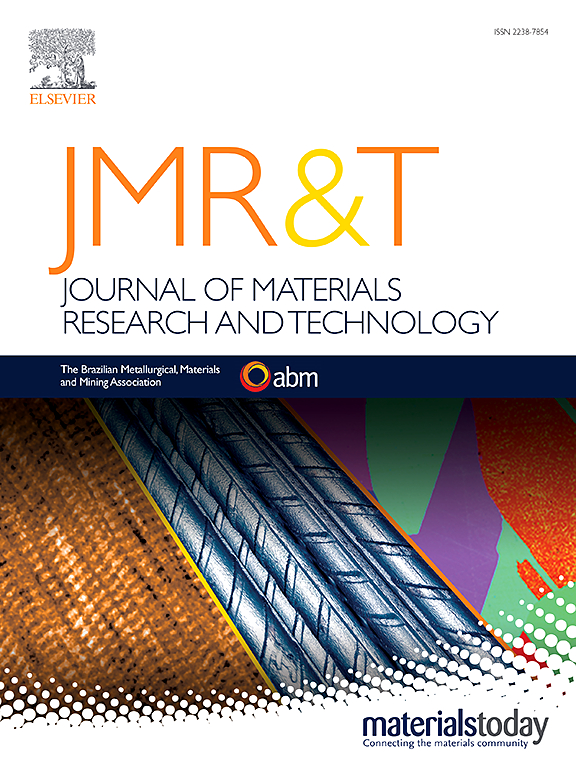等厚板焊接接头残余应力和变形局部冷却的数值模拟
IF 6.2
2区 材料科学
Q1 MATERIALS SCIENCE, MULTIDISCIPLINARY
Journal of Materials Research and Technology-Jmr&t
Pub Date : 2025-05-01
DOI:10.1016/j.jmrt.2025.05.057
引用次数: 0
摘要
针对不等厚钢板焊接接头应力分布和焊接变形的显著变化,通过实验和数值模拟研究了局部冷却对残余应力和焊接变形的影响。建立了三维热弹塑性有限元模型,并根据温度场测量和焊缝截面曲线进行了验证。模拟和实验测量的焊接应力和变形的对比分析表明,局部冷却显著降低了焊接区域的拉应力,同时促进了热影响区更均匀的应力分布。薄板局部冷却扩大了焊缝两端的压应力区域,增加了焊缝附近和冷却区内的横向拉应力。与非冷却条件相比,处理后的试样表现出明显改善的焊接应力分布和减小的变形。薄板侧角变形降低18%,厚板侧角变形降低26.7%,同时抑制屈曲变形。结果表明,局部冷却不仅提高了不等厚焊接接头的抗变形能力,而且有利于改变焊接应力的大小和分布规律。该研究为控制等厚板焊接接头的应力和变形提供了理论和技术指导。本文章由计算机程序翻译,如有差异,请以英文原文为准。
Numerical simulation of local cooling on residual stress and deformation of welded joints of unequal thickness plates
To address the significant variations in stress distribution and welding deformation of unequal thickness plate welded joints, this study investigates the effect of local cooling on residual stress and welding deformation through experiments and numerical simulations. A three-dimensional thermo-elasto-plastic finite element model was developed and validated against temperature field measurements and weld cross-sectional profiles. Comparative analyses of simulated and experimentally measured welding stresses and deformations reveal that local cooling significantly reduces tensile stress in the weld zone while promoting a more uniform stress distribution in the heat-affected zone. The implementation of local cooling on the thin plate expands the regions of compressive stress at both ends of the weld and increases transverse tensile stress near the weld and within the cooled zone. Compared to the non-cooled condition, the treated specimens exhibit markedly improved welding stress distribution and reduced deformation. Angular distortion decreases by 18 % on the thin-plate side and 26.7 % on the thick-plate side, concurrently suppressing buckling deformation. These findings demonstrate that local cooling not only enhances deformation resistance in unequal thickness welded joints but also favorably modifies the magnitude and distribution patterns of welding stress. This study provides theoretical and technical guidance for controlling stress and deformation in unequal thickness plate welded joints.
求助全文
通过发布文献求助,成功后即可免费获取论文全文。
去求助
来源期刊

Journal of Materials Research and Technology-Jmr&t
Materials Science-Metals and Alloys
CiteScore
8.80
自引率
9.40%
发文量
1877
审稿时长
35 days
期刊介绍:
The Journal of Materials Research and Technology is a publication of ABM - Brazilian Metallurgical, Materials and Mining Association - and publishes four issues per year also with a free version online (www.jmrt.com.br). The journal provides an international medium for the publication of theoretical and experimental studies related to Metallurgy, Materials and Minerals research and technology. Appropriate submissions to the Journal of Materials Research and Technology should include scientific and/or engineering factors which affect processes and products in the Metallurgy, Materials and Mining areas.
 求助内容:
求助内容: 应助结果提醒方式:
应助结果提醒方式:


